Festung Königstein in Germany is Europe's largest existing mountain fortress, rising mightily above the River Elbe. The impressive fortress, which has never been taken, now serves as a fascinating outdoor museum.
Table of contents
Königstein Fortress
Festung Königstein rises mightily at the top of a mountain on the river Elbe. We could see it from a distance from the campsite where we were staying, and were naturally curious to visit.
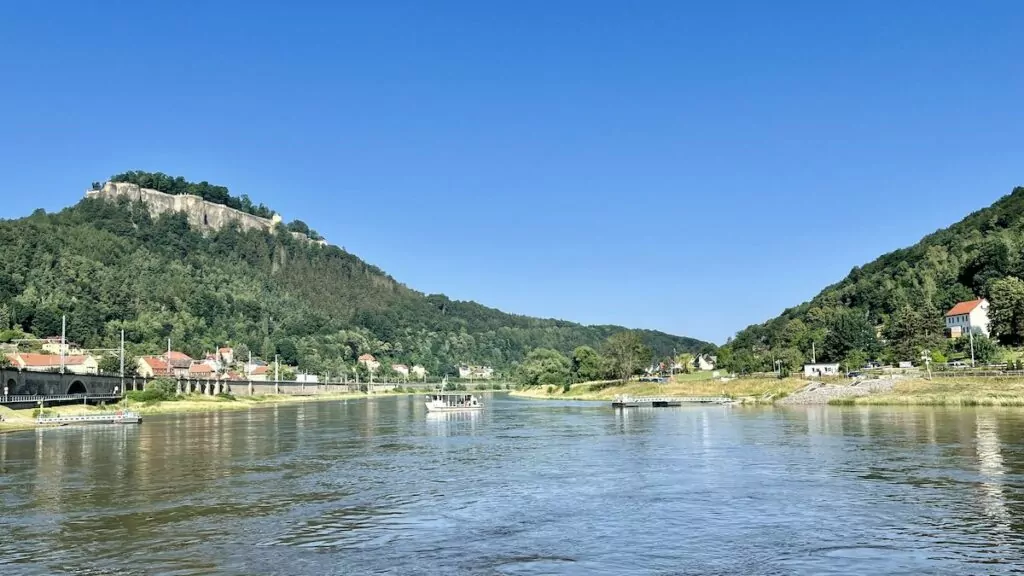
Festung Königstein is located in Königstein in the federal state of Saxony. The fortress is located in eastern Germany, about 20 miles southeast of Dresden.
Visiting Festung Königstein
You can get to Festung Königstein by train, bus, car, boat or bike. We drove here with the motorhome, and parked where a sign indicated parking for motorhomes. Then we chose to take the "Little Train" up to the fortress, to avoid the uphill climb in the heat.
Soon after, we were standing in front of the gigantic wall. It is not difficult to understand why this fortress was considered impregnable! Fortunately, today you only have to pay an entrance fee to get in, which you do through a large lift that takes you to the top.
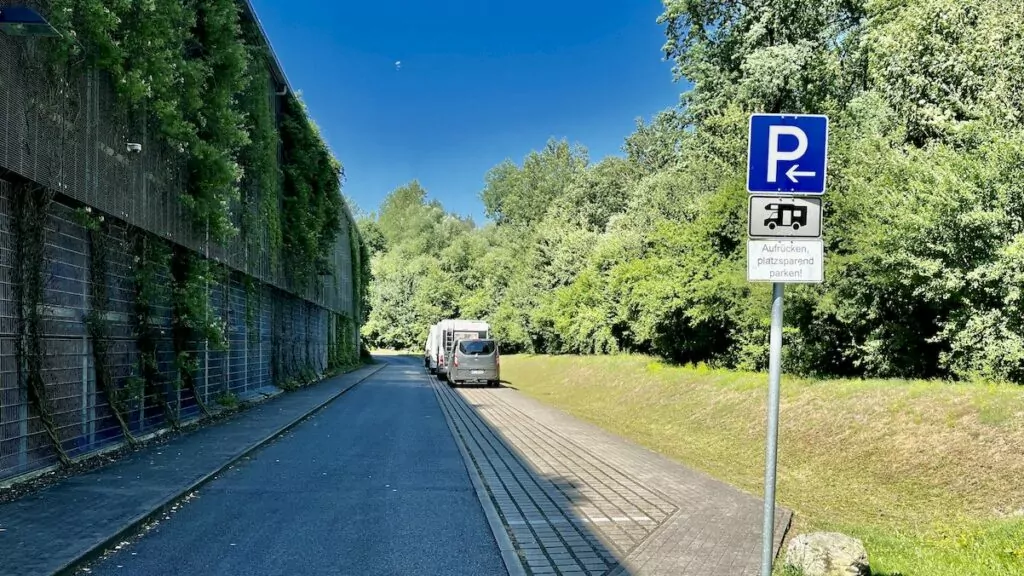
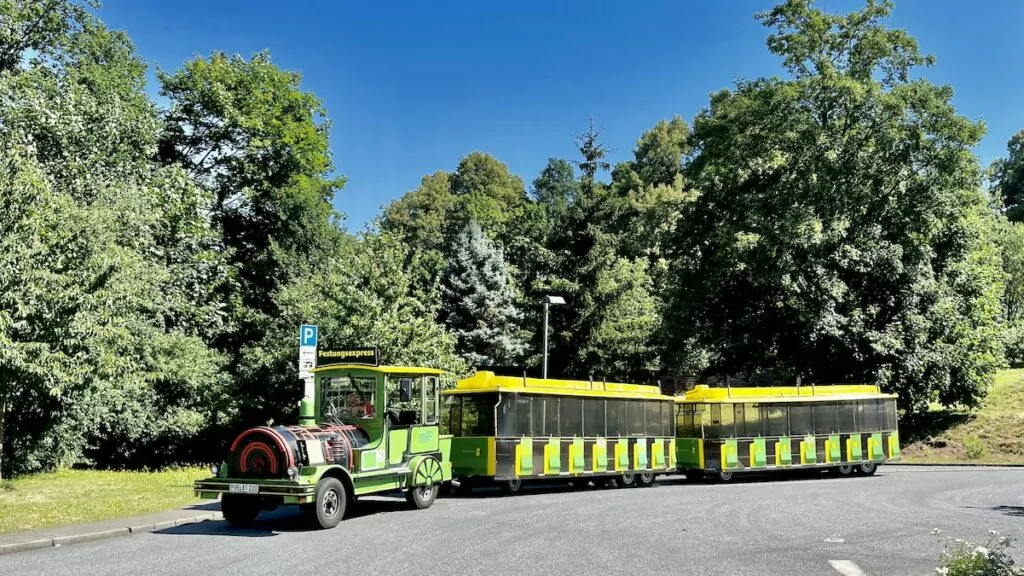
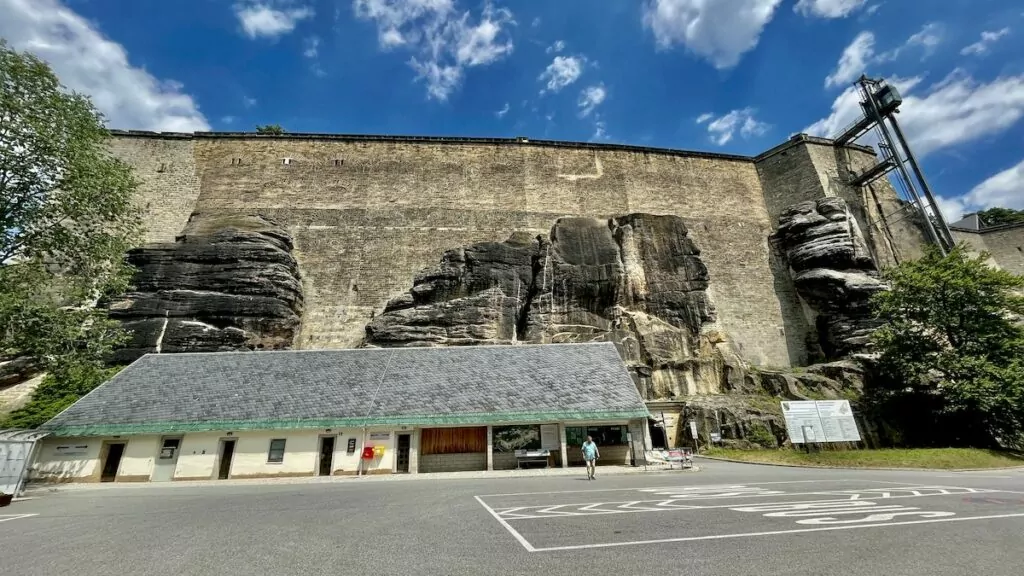
A medieval castle - which became an impregnable fortress
Festung Königstein started its history as a medieval castle, first mentioned in a document from 1233. But how would you get water for the people and animals up there on the hill? In the 16th century, a well was built with a staggering depth of 152.5 (!) metres.
At the end of the 16th century, Elector Christian I of Saxony ordered the castle to be converted into a fortress. The high cliffs already formed part of a 'natural fortress' and, together with the high walls that were erected, the fortress was so intimidating that no enemy dared try to take it.
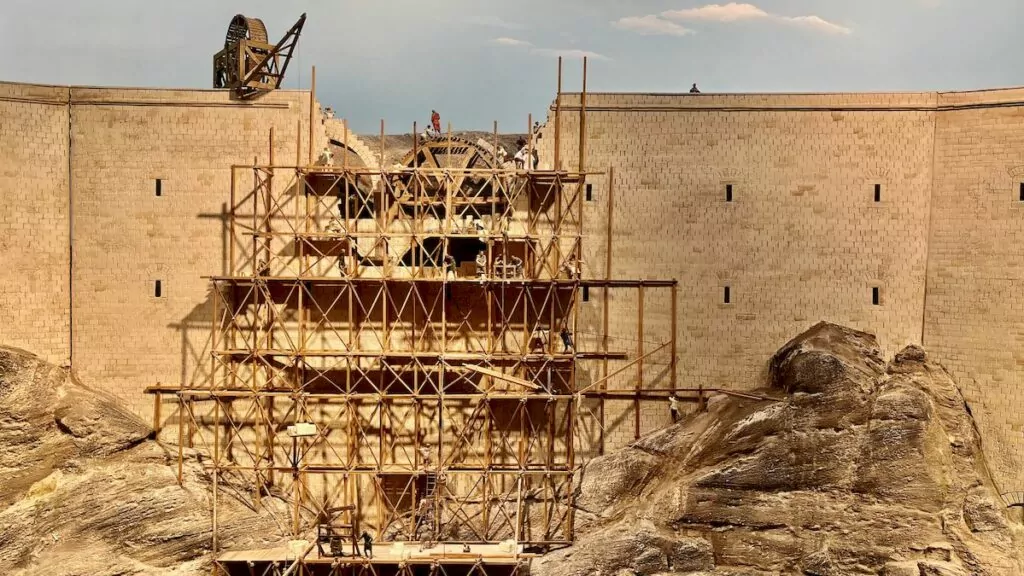
The fortress was built and strengthened over the years and was not completed until well into the 18th century. Many different rulers have had an influence here, including August the Strong, Elector of Saxony from 1694 to 1733. The fortress has also served as a prison for many centuries. In 1955 it was opened to the public as a museum.
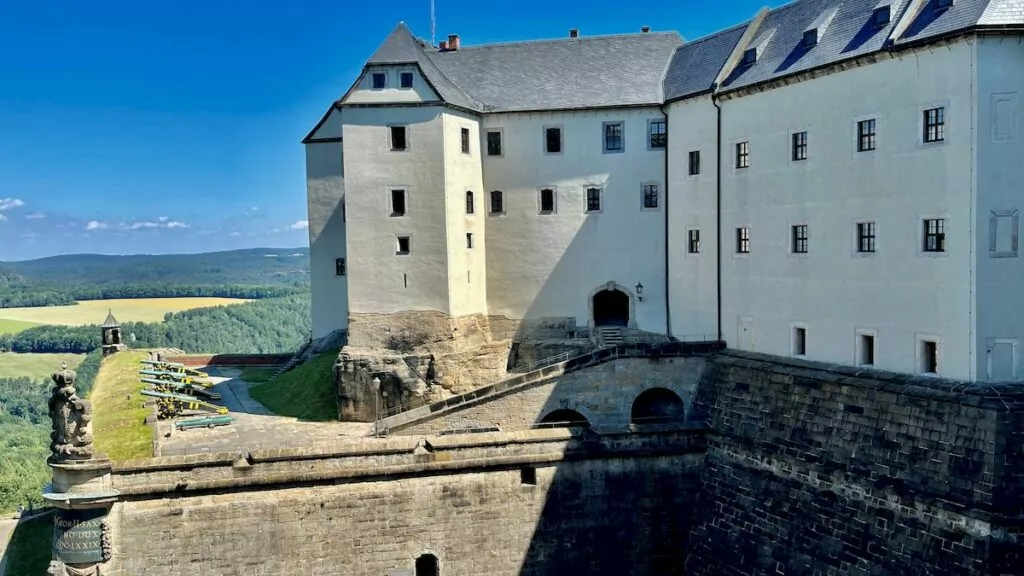
Tour of the fortress
When you get to the top, it's natural to start by looking at the view. From this high altitude you can see far in all directions.
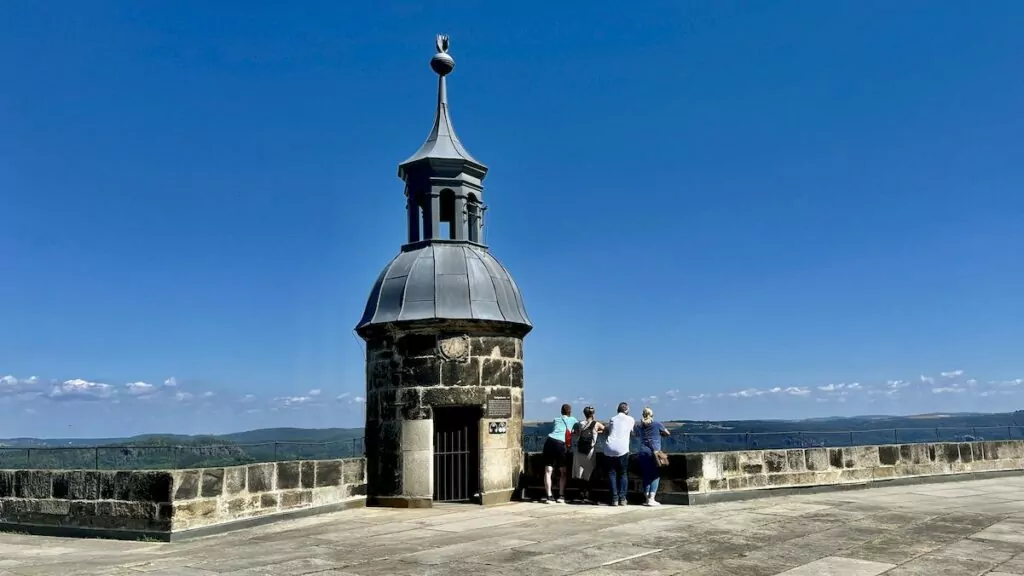
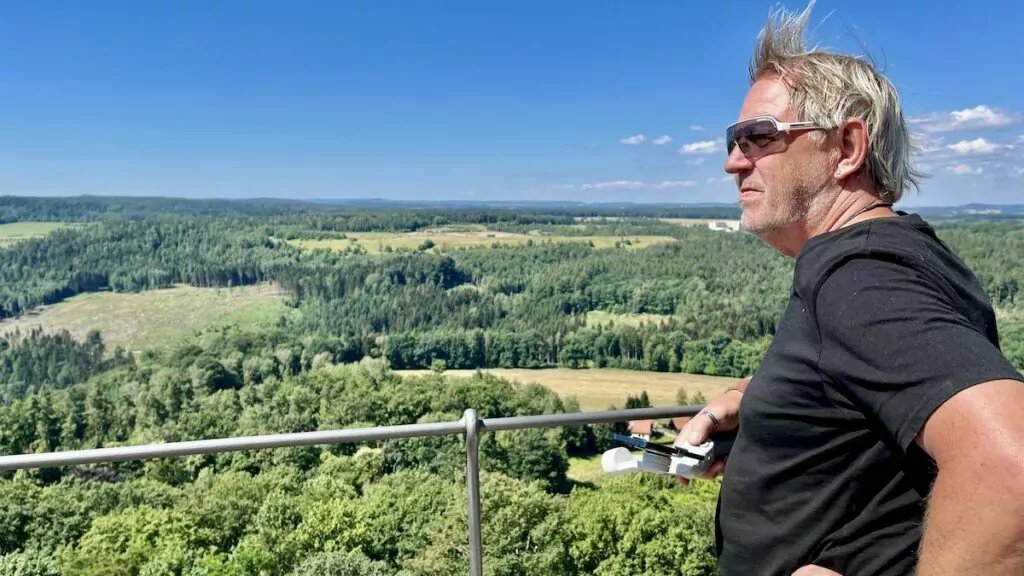
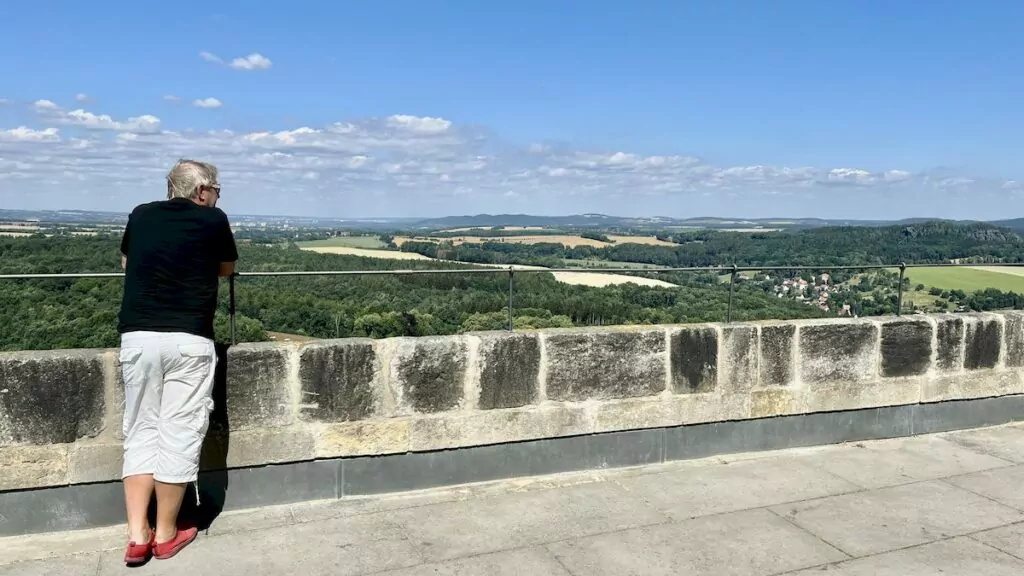
Most fascinating of all is the view of the Elbe river below.
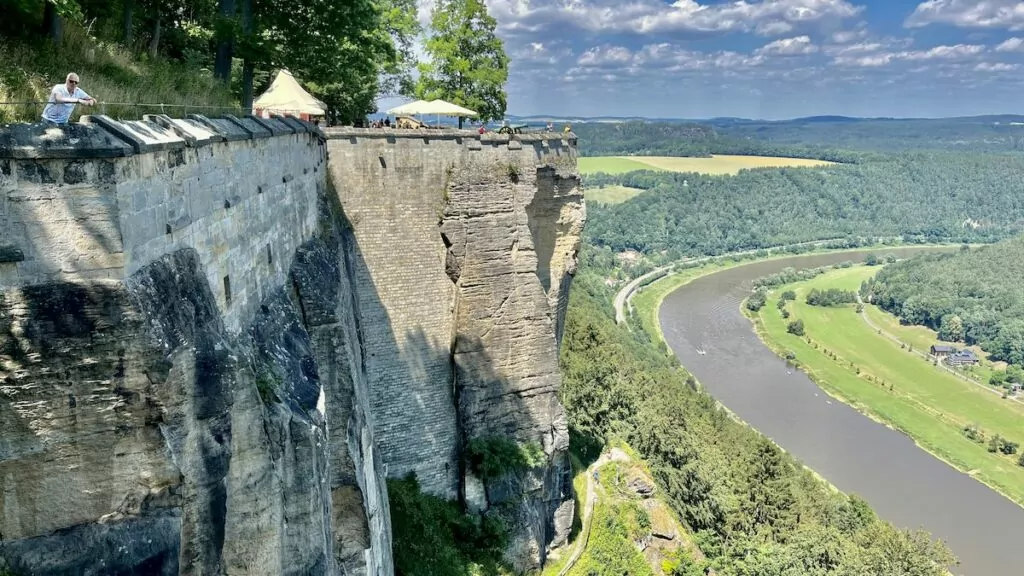
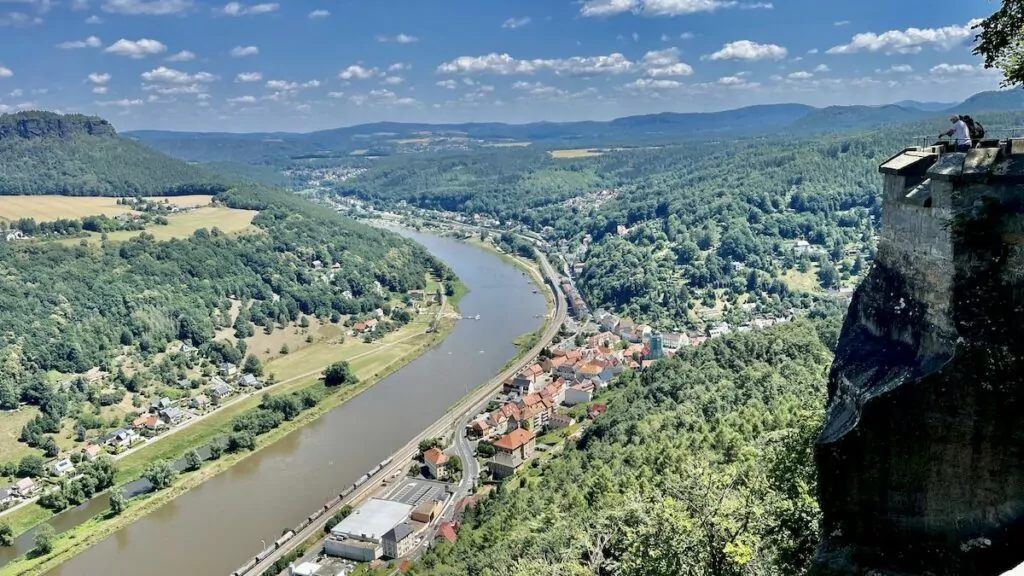
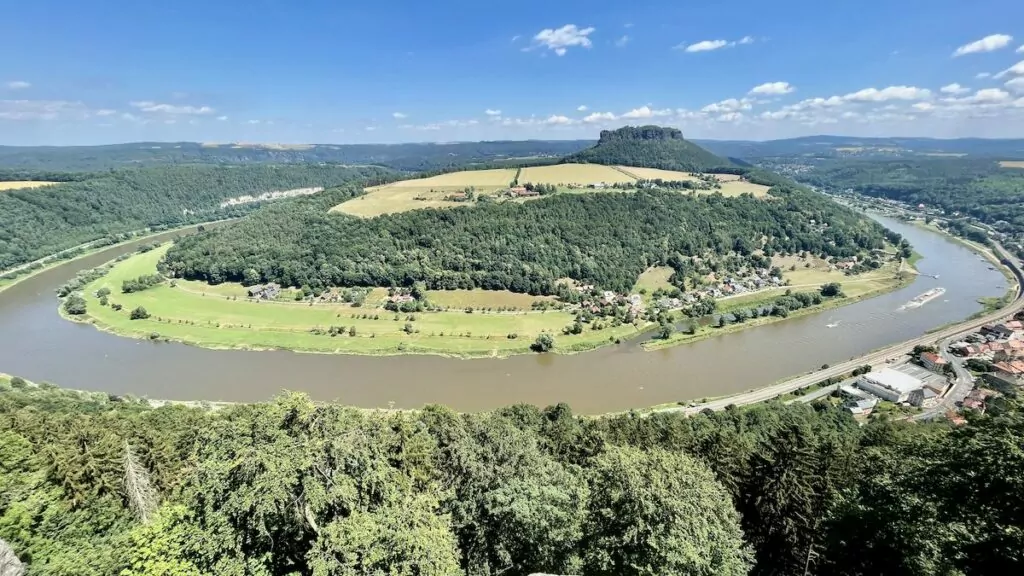
It's also great to look down on the walls, which in many places are largely made up of high, steep rock faces. How could anyone take this fortress? No, nobody did ...
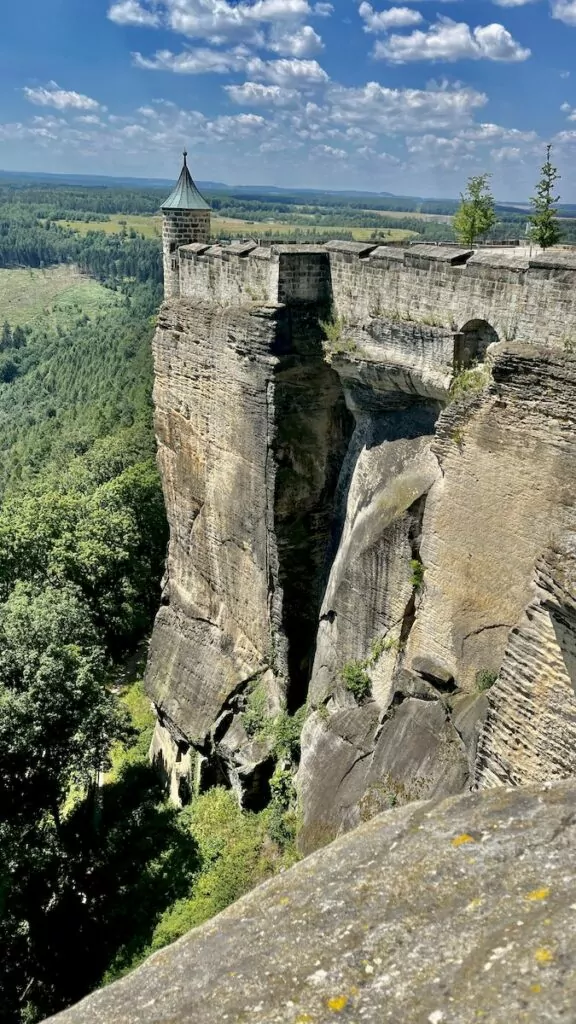
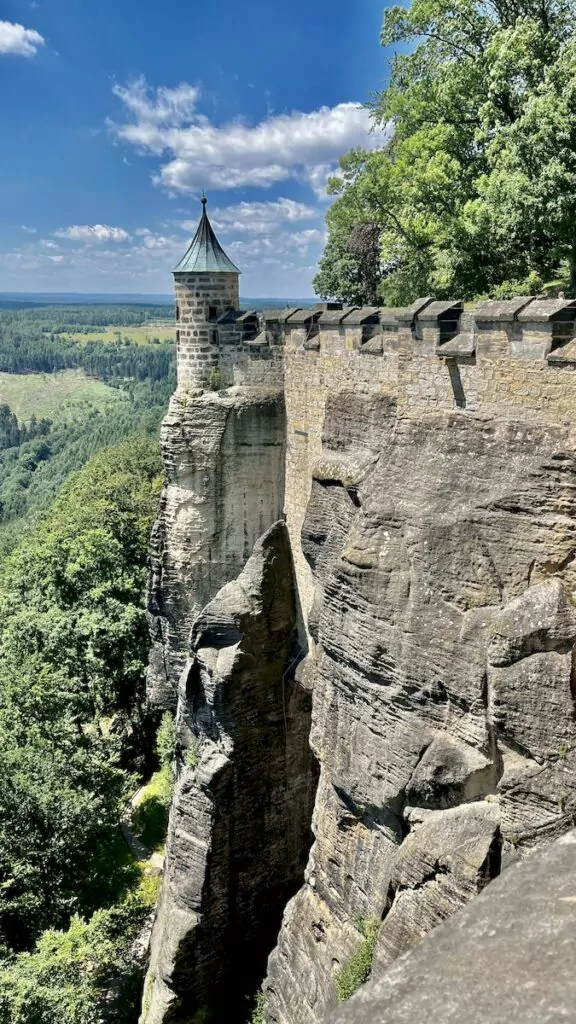
Of course, there were also plenty of cannons and guns for security purposes ...
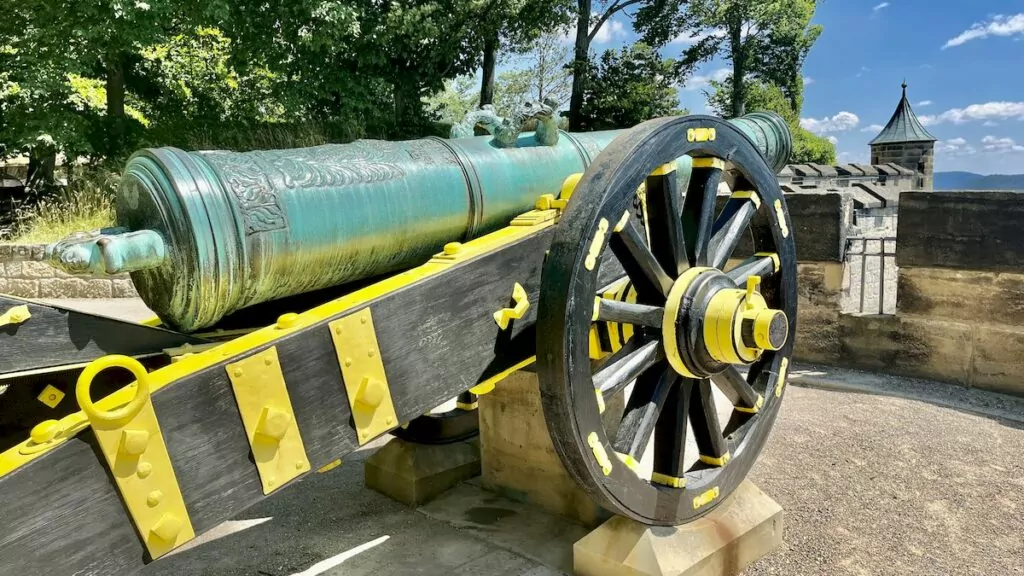
Of course, the people who spent time in the fortress also wanted to enjoy themselves, and built gazebos and other favourite places.
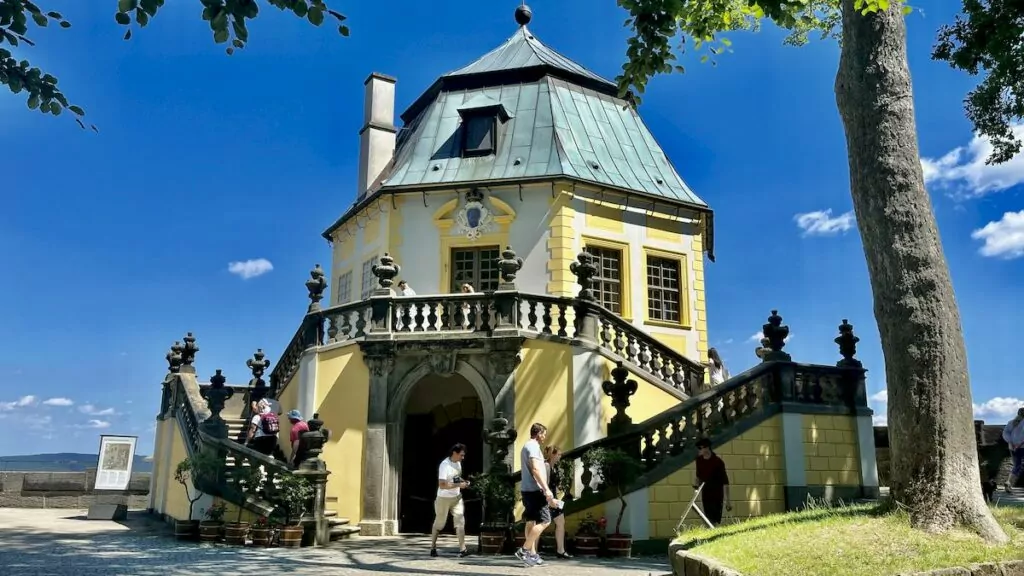
The fortress is huge, and walking around the area inside the walls is almost like walking in a city. There are some 50 old buildings that have served as castles, hospitals, prisons, homes and warehouses.
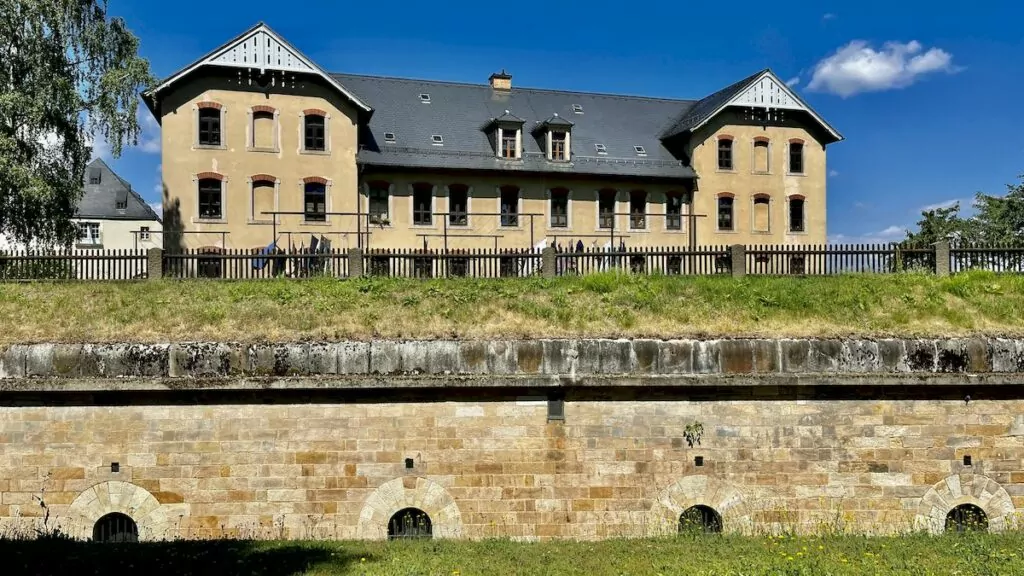
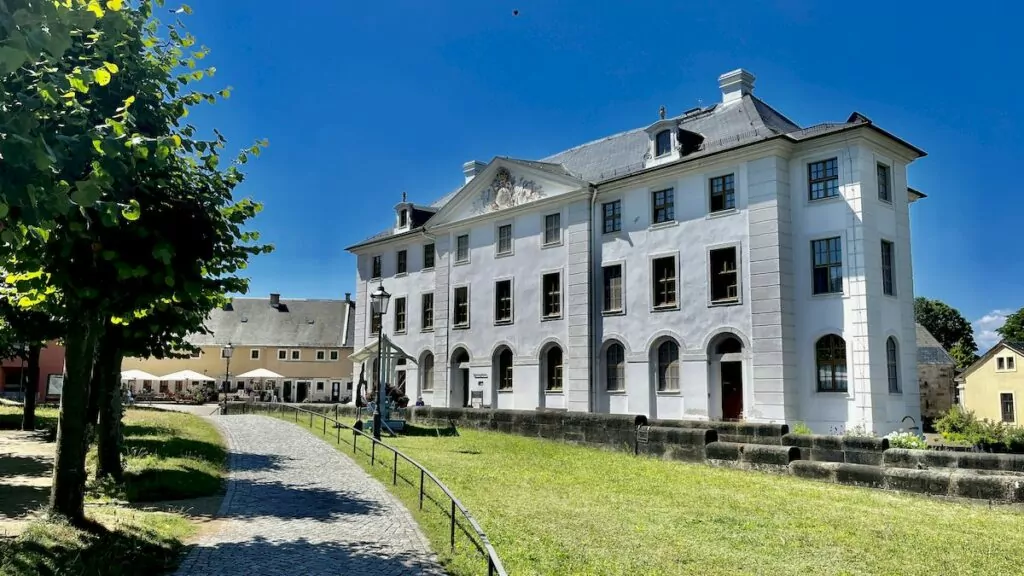
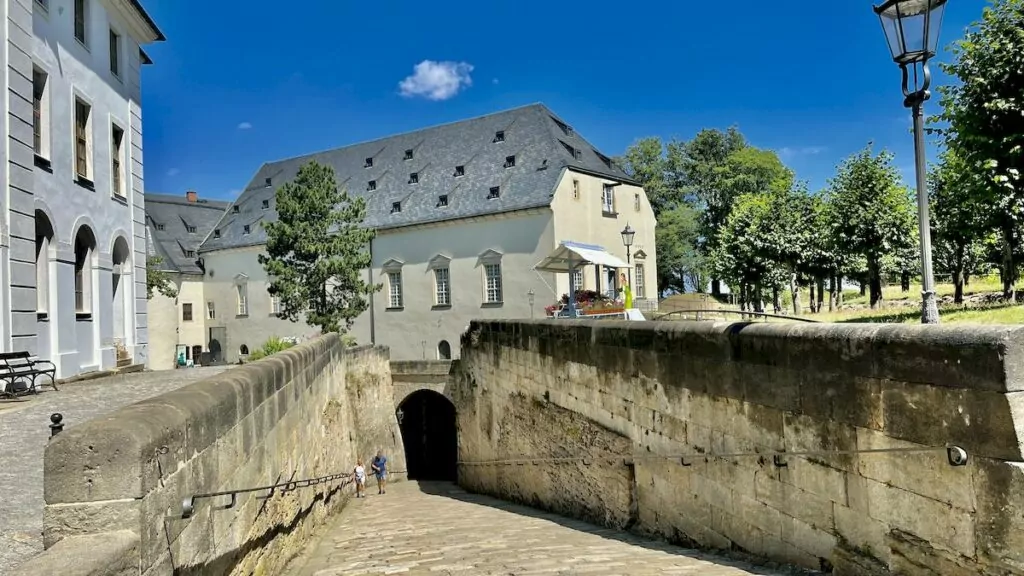
Exhibitions at Festung Königstein
Many of the buildings currently house different exhibitions. The entrance ticket gives free access to all exhibitions, so you can just go in and out as you please. We spent the most time at the permanent exhibition "In Lapide Regis - On the King's Stone". Very nice!
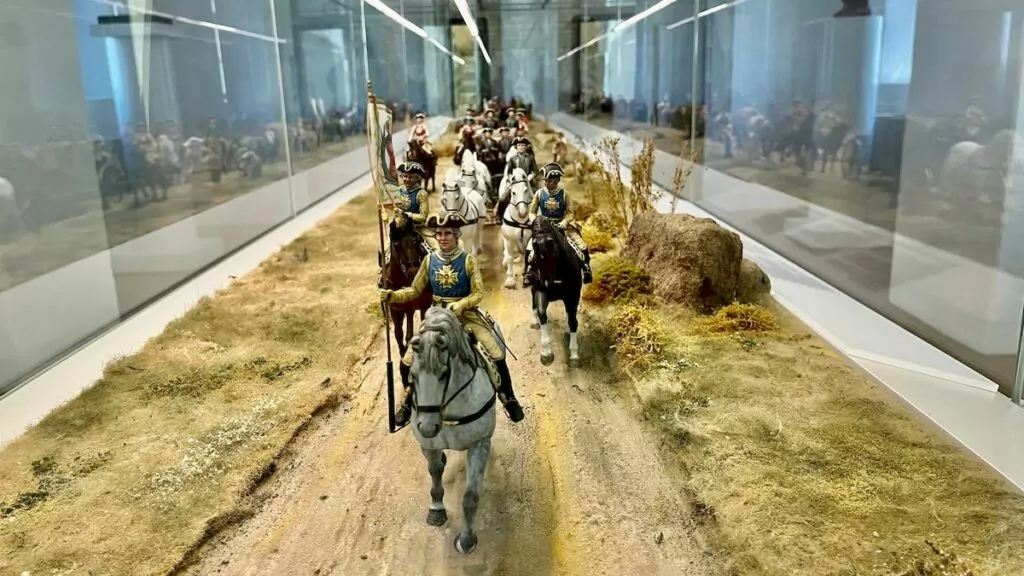

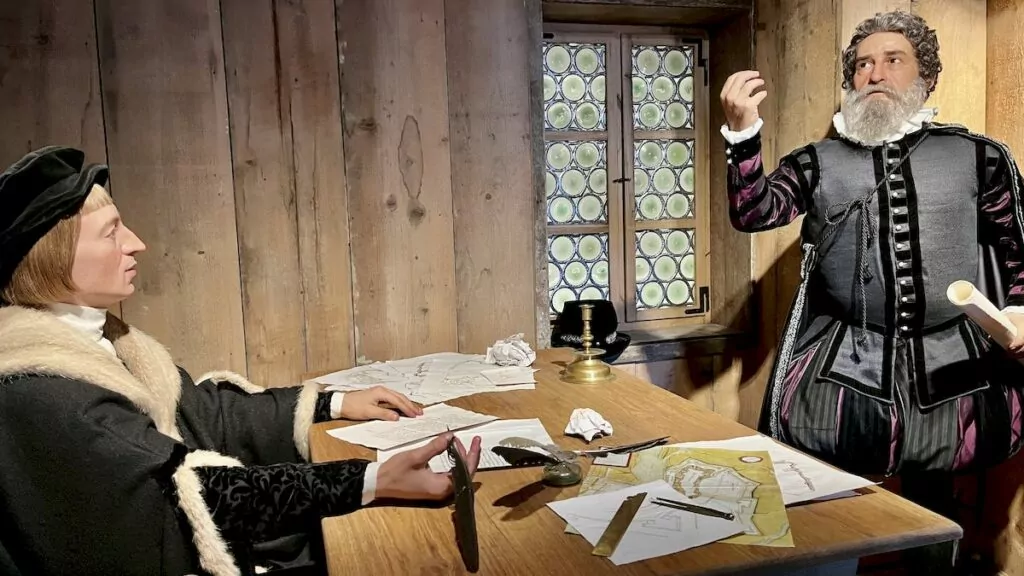
It was also interesting to look at the staggeringly deep well and descriptions of how various huge wheels worked to lift water and materials.
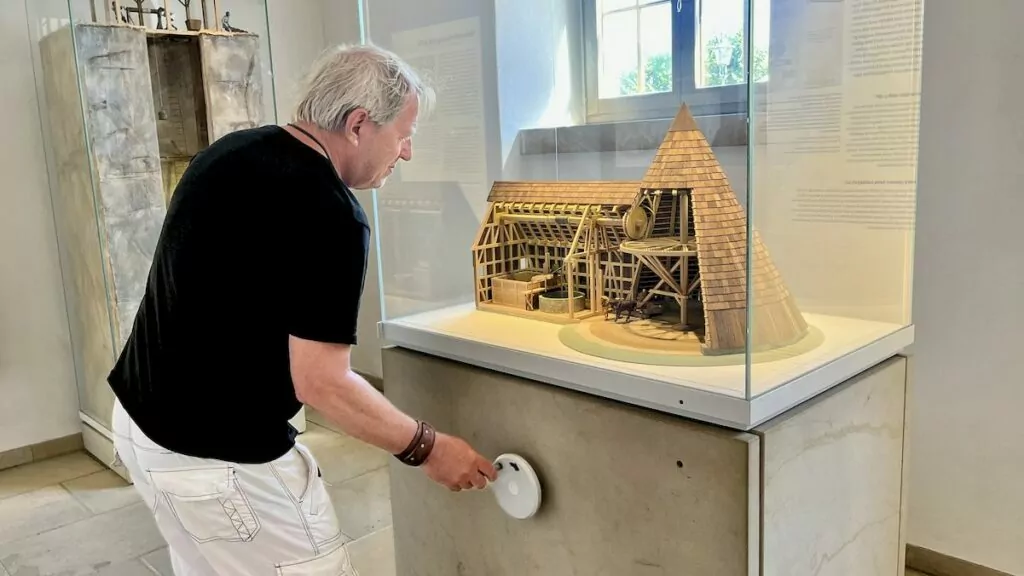
Lunch and ice cream at the fortress
After a while you get hungry of course! There are several different eating places in the fortress and we chose a small place along the fortress wall. Here we each had a simple potato soup - one with and one without sausage. Later there was an ice cream too!


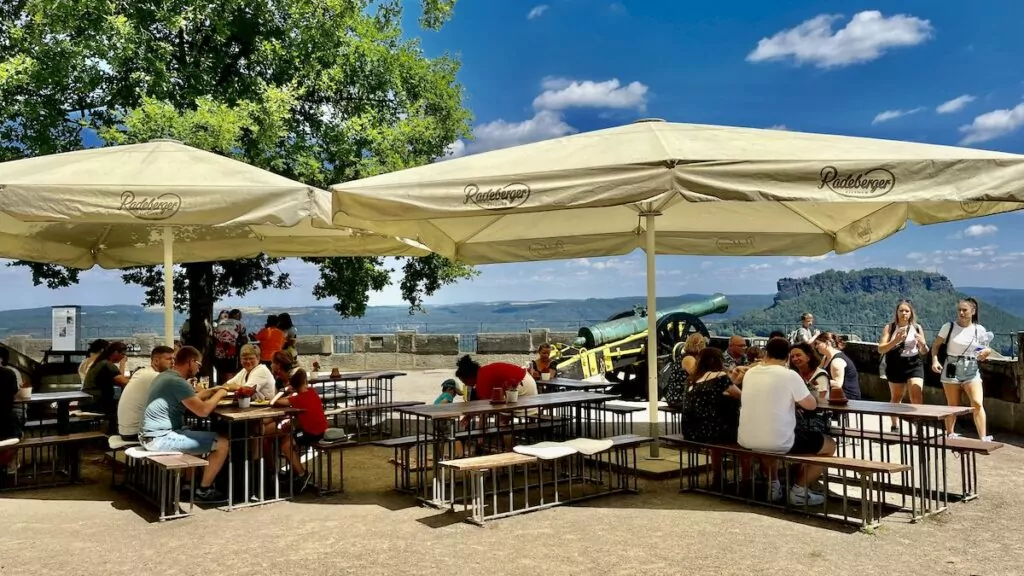
Film from Festung Königstein
Where can you camp with a motorhome or caravan?
We stood with the motorhome at Camping Königstein, which is located on the Elbe, overlooking the fortress. A nice campsite where we enjoyed ourselves!
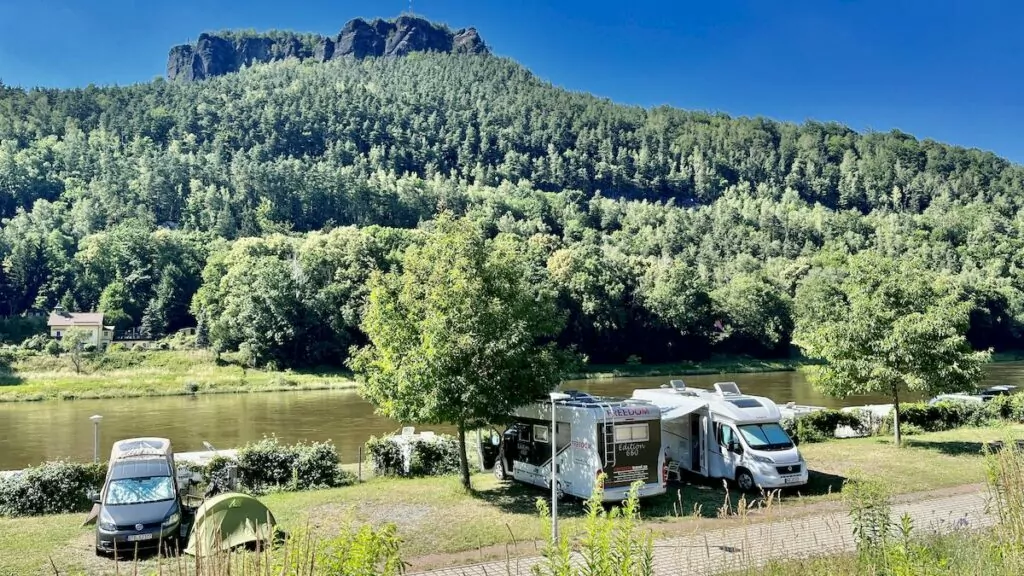
More to see and do in the neighbourhood
If you visit Festung Königstein, you won't want to miss Bastion, with the famous Bastei Bridge, which is very close by. We can also recommend visiting the magnificent city of Dresden. In addition, there are many great nature experiences on the Czech side, in the natural areas called Saxon Switzerland and Bohemian Switzerland, such as the sandstone arch Pravcicka Brana and Tisa.
Visiting Stralsund - a German little gem
Don't miss out on a visit to Stralsund if you're in north-eastern Germany. This pretty little...
Mines and caves in Germany - 7 exciting tips
Did you know that there are many exciting mines and caves in Germany to visit? We have...
German specialities in different regions - don't miss these
Writer: HELENA BERGSTRÖM German specialities, what are they? German food varies from region to region, and...
Castle Favorite in Rastatt - exclusive German summer palace
Castle Favorite in Rastatt is an exclusive 18th century summer palace in western Germany. Also...
Fairytale castle in Germany - Neuschwanstein in Bavaria
Fairytale castle in Germany - Neuschwanstein in Germany is located in south-west Bavaria on the border with Austria. Disney designed...
10 picturesque towns in Germany - a great road trip
Writer: Helena Bergström Today we present ten picturesque towns in Germany - along a route of...
Beautiful roads in Germany - themed holiday routes
There are more than 150 beautiful roads in Germany, each with its own theme and packed with...
Kröslin marina in Germany - the farewell party of the sailing trip
Finally, it was time to sail into Kröslin marina, or Kröslin Baltic Sea Resort...
Things to do in Saxony-Anhalt - 9 great experiences in Germany
What to see and do in Saxony-Anhalt? This German federal state offers everything from picturesque...
Restaurants in Hamburg - our top 7 tips
Restaurants in Hamburg we can tell you about today! During our visit to Hamburg we had time to eat ...
Moritzburg Castle near Dresden - a fairytale hunting lodge
Moritzburg Castle near Dresden is a beautiful and fabulous hunting and baroque castle, well worth a visit....
Which ferries run from Sweden to Germany? - 5 options
Which ferries go from Sweden to Germany? We have travelled many times from Sweden to Germany...
Things to do in Magdeburg - 12 tips for the Ottostadt in Germany
What to do in Magdeburg, Germany? This city, sometimes referred to as the 'Ottostadt', has a...
Finnlines Malmö - Travemünde - en route to Hamburg
To get to Germany and Hamburg we took Finnlines Malmö - Travemünde. This route suited...
The Roman Empire in Germany - 6 sites from the Roman period
The Roman Empire in Germany? Yes, indeed! Ancient Rome was a powerful empire that originated in Rome, but...
Beer in Germany - 6 German experiences with a beer theme
What is the best way to experience beer in Germany? Germany has a strong beer culture and it...
Lübeck, Germany - Queen of the Hanseatic League
The old Hanseatic city of Lübeck is a harbour city located in Schleswig-Holstein in northern Germany. Here you can...
The island of Usedom - cycling between Poland and Germany
The island of Usedom is located on the southern coast of the Baltic Sea and is shared by Poland and Germany. We are on a sailing trip...
Eagle's Nest - Hitler's 50th birthday present among the mountains
We have visited the Eagle's Nest, or Kehlsteinhaus as the house is actually called in German. This extremely high...
Travelling by motorhome in Germany - all you need to know
What is it like travelling by motorhome in Germany? We have travelled many times by motorhome...
Green Citadel in Magdeburg - playful and green living
The Green Citadel in Magdeburg is a residential building, but also a spectacular and amazing sight. This house...
Things to do in Hann. Münden - 10 tips for a crochet dream
What to do in Hann. Münden in Germany? This small town is a fantastic place to...
Schwerin Castle - fairytale castle in northern Germany
Schwerin Castle is a beautiful fairytale castle with battlements and towers, located in northern Germany....
Christmas in Germany - inspired by German Christmas traditions
Christmas in Germany offers everything from tasty pastries and delicious Christmas food to atmospheric Advent music. I...
All about asparagus in Germany - Festivals, Routes and Recipes
Asparagus in Germany - it is far more than just a vegetable. As the asparagus season gets underway...
Germany's longest suspension bridge - Titan RT in the Harz Mountains
Germany's longest suspension bridge, the Titan RT, spans the Rappbode valley and dam in the Harz Mountains. From...
Ostsee camping in northern Germany - and party with the gang
We have, together with eleven other motorhomes, spent three nights at the Ostsee camping in Zierow outside...
What to do in Quedlinburg - 12 tips for a cute half-timbered town
What to do in Quedlinburg, Germany? This city is listed as a UNESCO World Heritage Site for...
Wörlitzer Park in Germany - Dessau-Wörlitz Garden Kingdom
Wörlitzer Park is part of the Dessau-Wörlitz Garden Kingdom, which has been designated a UNESCO World Heritage Site due to...
North Sea coast in Germany - Husum and Sankt Peter-Ording
Our last stops during this summer's long motorhome trip were Husum and Sankt Peter-Ording on the North Sea coast of Germany....
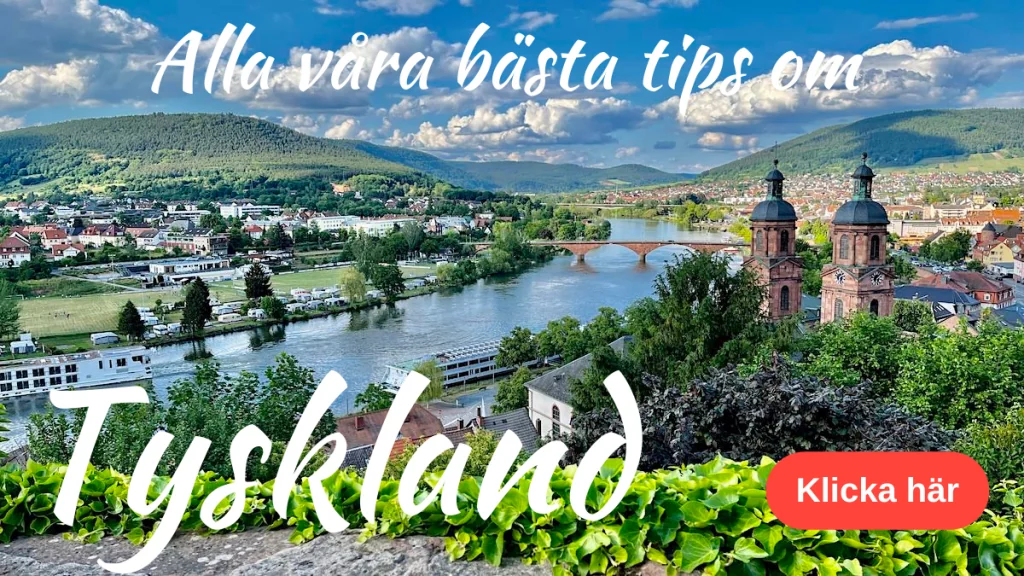
Have you visited Festung Königstein?
Have you visited Festung Königstein? Do you like to visit fortresses and other historical sights while travelling?
Facts about Königstein Fortress
- Federal Republic of Germany: Saxony
- Country: Germany
- Location: About 20 miles south-east of Dresden, on the west bank of the Elbe.
- Behaviour: 1589-1731
- Read more: You can find more information at The fortress website.
Services and practical information
- Opening hours: From April to October, the fortress is open daily from 09:00 to 18:00. From November to March, the fortress is open daily from 09:00 to 17:00. The fortress is only closed on 24 December and has reduced opening hours on 31 December and 1 January (2022).
- Prices: Adults pay €13/person. School children, students and people with disabilities pay €10/person. Children up to 6 years old are free (2022).
- Audio guide: Audio guides can be hired for €3.50/person.
- Guided tours: Guided tours in German are given every day for €4/person (2022). Guided tours in English are only available for groups, if booked at least 14 days in advance.
- Food service: There are several restaurants and cafés in the fortress area.
- Parking: Parking is available just below the fortress. There are special spaces for motorhomes. You can walk from the car park, or take a "mini-train".









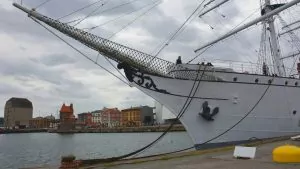
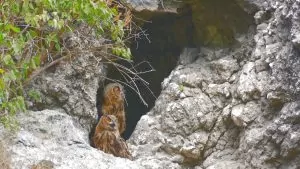

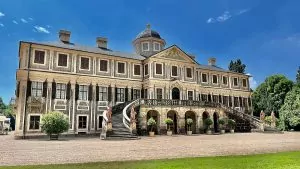
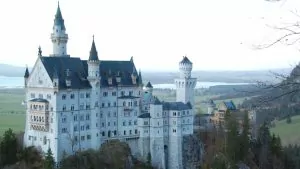
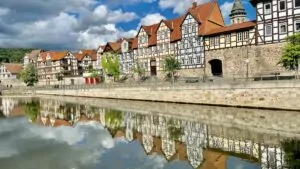
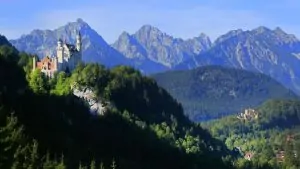
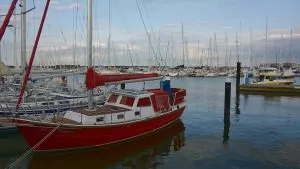


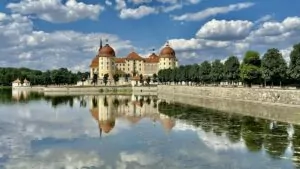
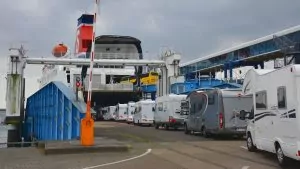


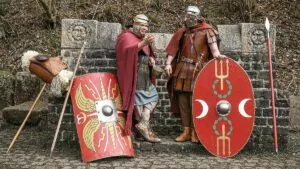

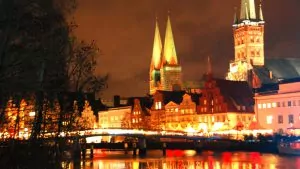

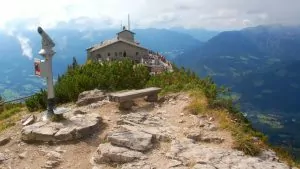
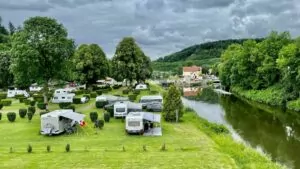
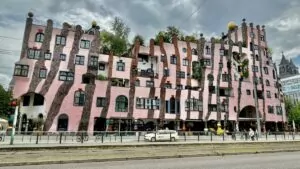
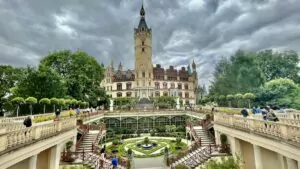


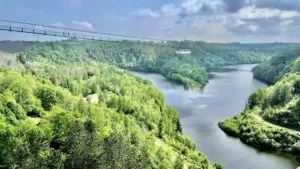
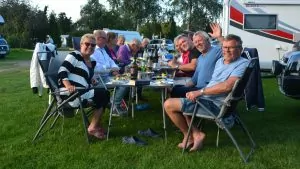
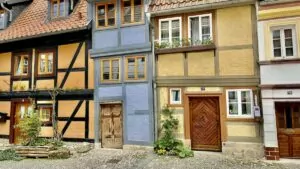
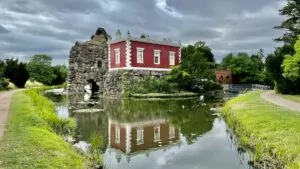
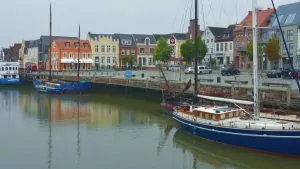
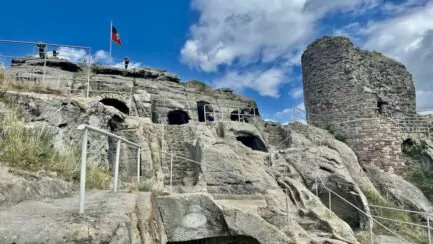
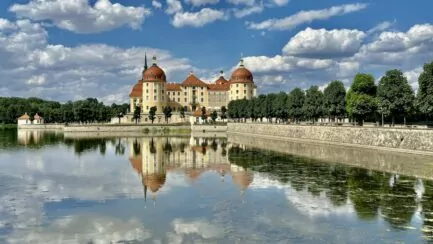
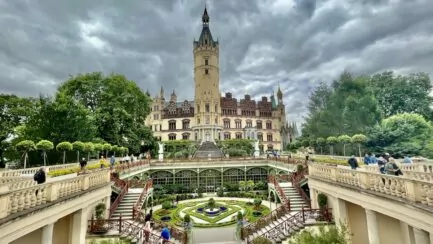

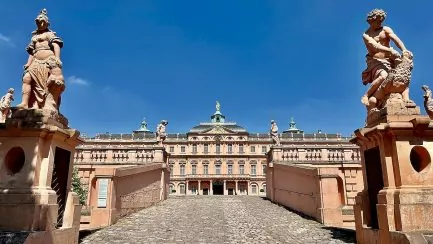
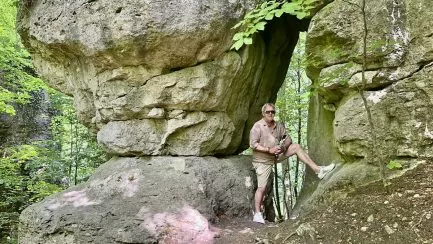



Mr Nils-Åke Hansson says:
What a view of the Elbe, one wonders how they could build these castles. When you think about today's technology, that equipment was not available,
17 July 2022 - 11:19
bmlarstravellingblog says:
We had planned to visit the fortress when we stayed at the campsite, but the weather during our weeks in Germany was not on our side - pouring rain one day, then a great day we spent on an excursion to Bastei to wake up the next day to a gigantic thunderstorm.
Fortunately, the fortress is still standing....
17 July 2022 - 13:27
BP says:
An incredible story about that fortress. And it's still there. I don't think any of the sandwich buildings being thrown out today will reach the age of the fortress. And I don't even want to talk about the well...
17 July 2022 - 20:42
Lena - good for the soul says:
What a place! Fascinating how they were able to build all the amazing places without the tools of the day!
Hug Lena
12 October 2022 - 5:55